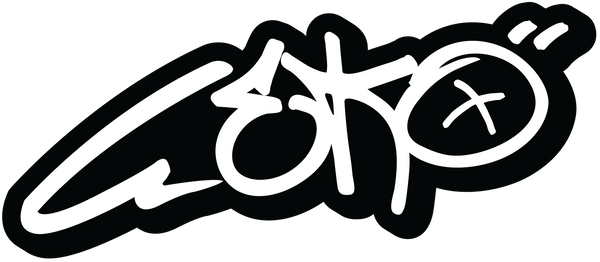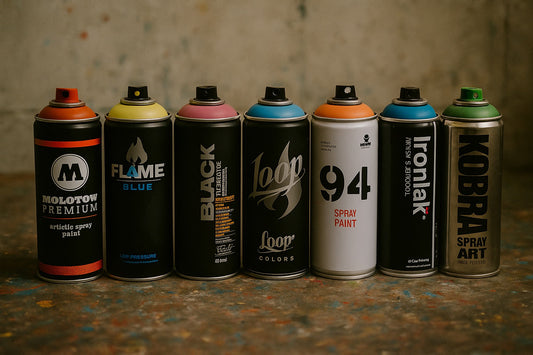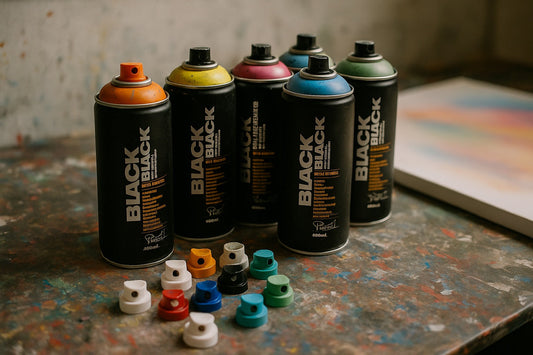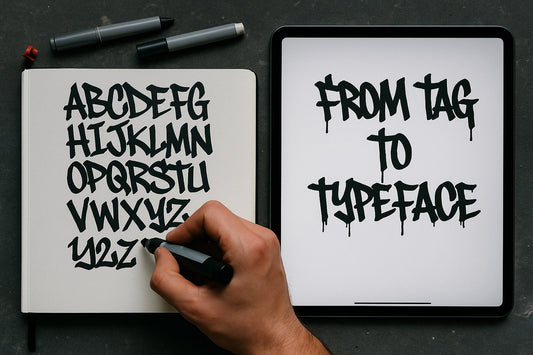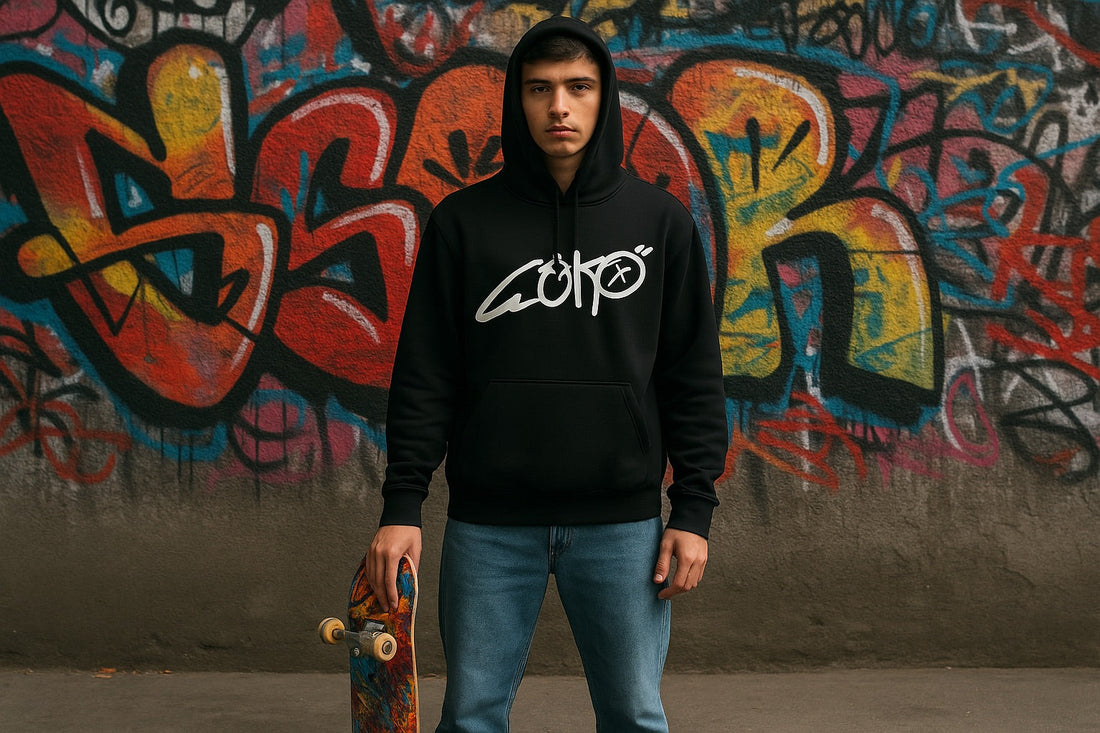
Graffiti’s Influence on Streetwear Design
Share
Intro
Graffiti and streetwear are twins separated at birth. One spoke in spray paint; the other answered with cotton, jersey, and nylon. What started as late‑night tags on shutters now sells out in minutes on drop day. This blog digs into how graffiti shaped streetwear’s attitude, design language, typography, and colour and how Geko channels that same energy into art you can live with. If you’re the person who reads care labels like liner notes, welcome home.
The Origin Story: From Walls to Wardrobes
The earliest streetwear borrowed credibility from the walls: crews, tags, and throw‑ups became unofficial uniforms for kids who lived outside the boutique system. As mixtapes moved through neighbourhoods, so did tees screened in garages and school print rooms, using the same hand‑styles seen on trains. DIY wasn’t a trend; it was survival.
As brands emerged, they didn’t abandon the streets they documented them. Flyers, wheat‑pastes, and blackbook sketches influenced graphic placement and silhouette choices. That synergy built a feedback loop: murals inspired tees, tees financed murals, and the culture scaled without losing the spark.
Hand‑Styles & Logos: The Tag That Became a Trademark
A tag is a signature under pressure: fast, fluid, distinct. Streetwear logos chased the same goals, instant recognition at a glance. The best marks feel handwritten even when vectorised; they carry motion, swagger, and repetition value.
Designers learned from writers: weight contrast, over‑runs, drip illusions, halo outlines. Even when type got cleaned up for retail, the cadence stayed street. You see it in stacked wordmarks, off‑grid baselines, and caps that look like they were born on a marker nib.
Colour Theory of the Streets: High Contrast Meets Asphalt
Graffiti colour evolved for visibility: pops that cut through grey skies, brick, and metal. Streetwear lifted that palette directly neons over neutrals, primary hits on slate, high‑key accents on washed black. The trick isn’t just brightness; it’s contrast against context.
In apparel, that means pairing loud graphics with grounded fabric tones, or flipping it: mineral‑washed tees with ultraviolet inks. Geko works the same way electric petals over concrete textures so your walls get the same attitude your fits do.
Texture, Drips, and Distress: Printing What Paint Does
Aerosol has character overspray haze, soft edges, accidental drips. Screen printers mimicked that with halftones, discharge inks, puff, and crackle underbases. Embroidery got messy on purpose; patches frayed like a wheat‑paste peeling on day three.
Those “imperfections” proved authenticity. In graphics, we build in texture: tape shadows, marker bleed, roller streaks. On canvas, Geko layers spray, acrylic, and paint marker to archive those happy accidents forever no weathering required.
Motifs with Meaning: Crews, Cities, Flowers, Codes
Streetwear borrows graffiti’s icon language crowns, arrows, cartoon hands, metro maps badges that say “I was there.” Geko’s twist is floral: soft petals pushing through hard textures. It’s the classic street metaphor life through concrete reframed for interiors.
Motifs travel well. A rose can be romance or resistance depending on the outline and fill. Pair it with a hand‑style quote and you’ve got a story on fabric or canvas. Your wardrobe becomes your wall; your wall backs your wardrobe
DIY to DTC: Zines, Drops, and Limited Runs
Before carts and countdowns, there were zines and trunk sales. Limited runs weren’t hype they were budget limits. That scarcity mindset shaped streetwear’s drop culture: announce, tease, release, repeat. Graffiti crews already knew cadence; walls had windows.
Today, DTC brands still use those rhythms. Geko mirrors the strategy with capsule releases, timed print drops, and numbered originals. Collectors don’t just buy products they buy moments.
Skate, Music, and the Cross‑Pollination Engine
Skate spots and train lines were the original galleries. Photographers shot both; musicians wore the tees; magazines stitched the scenes together. Cross‑pollination made ideas move faster than any algorithm what worked in one lane caught fire in another.
That engine still powers aesthetics: decks with drip graphics, hoodies with stencil fonts, mixtape covers that look like sticker bombs. Geko nods to that ecosystem skate‑ready objects, studio shots with cans and markers, and canvases that feel like album covers you can hang.
From Counterculture to Capsule: When Luxury Came Calling
Graffiti moved from subways to white cubes; streetwear moved from skate shops to runways. The collision sparked capsules that brought aerosol logic to silk, leather, and tailoring. Purists worried about dilution; others saw it as proof the language was universal.
The lesson: context changes value, not meaning. A hand‑style on a scarf is still a hand‑style. In homes, the same logic applies: a raw, graffiti‑inspired canvas looks fearless above a minimal sofa. Geko’s role is translator keeping the bite while fitting the room.
Sustainability & Authenticity: Beyond the Graphic
Real ones care about process: blanks that last, inks that don’t crack on wash two, and artists who get paid. Graffiti taught accountability your name’s on the line. Good streetwear carries that ethic; so does good art.
Geko keeps it honest: considered materials, limited runs, and transparent artist‑led creation. Buy less, buy better, collect what means something. That’s sustainability with taste, not guilt.
Styling the Fit & the Flat: Wear It, Live It
The cleanest move is cohesion: wall art that riffs on your rotation. If your wardrobe leans washed black + neon hits, choose a canvas with the same contrast. If your fits are floral with edge, go for Geko’s flower‑plus‑hand‑style pieces.
Think in capsules: anchor item (big canvas), supporting tees (smaller prints), accessories (stickers, objects) to sprinkle the vibe. Your home becomes your backstage; your outfits are the tour.
Community & Collecting: The Archive You Live With
Streetwear built communities through queues, forums, and first‑wear photos. Graffiti built them through blackbooks and benching spots. Collecting bridges both documenting seasons, eras, and artists you believe in.
Treat your space like an archive. Rotate pieces with the seasons, log purchase dates, and frame with intent. Over time, your walls tell the story of your scene. Geko pieces are made to be those chapter markers.
Conclusion
Graffiti didn’t just influence streetwear, it wrote its vocabulary: tags became logos, drips became textures, palettes became uniforms. Today, the line between wall and wardrobe is barely there, and that’s the sweet spot where Geko lives. We translate street language into canvases and prints that hold the same charge as a fresh tee on drop day. Wear the culture. Live with the culture. Collect the culture.
